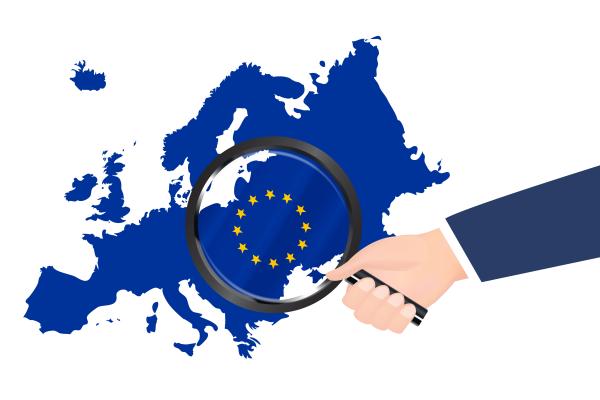Following the unprecedented crisis caused by the COVID-19 pandemic, Denmark’s recovery and resilience plan has responded to the urgent need to foster a strong recovery, while making Denmark’s economy and society more resilient and future ready. In response to the energy market disruption caused by Russia's invasion of Ukraine, the Commission launched the REPowerEU Plan. The Recovery and Resilience Facility is at the heart of its implementation and its funding. Under REPowerEU, EU countries are updating their recovery and resilience plans with new measures to save energy and diversify the EU’s energy supplies.

Green transition
Focusing on green technologies and capacities - sustainable mobility, energy efficiency and renewables, climate change adaptation; circular economy; and biodiversity.
Policies for the next generation
Improving access to and the quality of general, vocational, and higher education; focusing on digital education, early childhood education and care; supporting youth employment.
Smart, sustainable, inclusive growth
promoting entrepreneurship, competitiveness, industrialisation; improving the business environment; fostering research, development and innovation, supporting small- and medium-sized businesses.
Digital transformation
Promoting the roll-out of very high-capacity networks, the digitalisation of public services, government processes, and businesses, in particular SMEs; developing basic and advanced digital skills; supporting digital-related R&D and the deployment of advanced technologies.
Social and territorial cohesion
Improving social and territorial infrastructure and services, including social protection and welfare systems, the inclusion of disadvantaged groups; supporting employment and skills development; creating high-quality, stable jobs.
Health and economic, social and institutional resilience
Improving the resilience, accessibility and quality of health and long-term care, including measures to advance their digitalisation; increasing the effectiveness of public administration systems.
The map exclusively serves information purposes and is not an exhaustive database of projects supported by the Recovery and Resilience Facility. It does not reflect the distribution of the projects funded by the Recovery and Resilience Facility across the European Union, nor across different geographical areas or sectors within EU Member States. The RRF funding amounts shown for measures are based on the initial cost estimates included in the recovery and resilience plans.
Furthermore, the projects showcased are without prejudice to any future assessment by the Commission in the context of verifying the satisfactory fulfilment of milestones and targets under Regulation (EU) 2021/241 establishing the Recovery and Resilience Facility.
Country snapshot

The country snapshot illustrates some of the most iconic and impactful projects included in the Danish Recovery and Resilience Plan that will bring positive change for EU citizens, businesses and the EU at large.
The reforms and investments in Denmark’s plan, approved by Council on 13 July 2021, are helping it become more sustainable, resilient and better prepared for the challenges and opportunities offered by the green and digital transitions. Following Council approval of Denmark’s plan on 13 July 2021, Denmark’s recovery and resilience plan was updated on 9 November 2023, also to introduce a REPowerEU chapter.
*This value includes also the part of the plan which is financed with national resources
- 37 investment streams and 7 reforms
- 69% of the plan will support climate objectives
- 27% of the plan will foster the digital transition.
The transformative impact of Denmark’s plan is the result of a balanced combination of reforms and investments which address the specific challenges of Denmark. The reforms will support the green transition of the economy, while most investments are targeted to increase energy efficiency, reduce CO2 emissions and foster the digital transformation.
All measures have to be implemented within a tight time frame, as the Regulation establishing the Recovery and Resilience Facility requires all milestones and targets within the national plans to be completed by August 2026.
REPowerEU measures in Denmark’s plan
Denmark’s plan now includes a REPowerEU chapter containing one new reform, two new investments and two upscaled investments to deliver on the REPowerEU Plan's objectives to make Europe independent from Russian fossil fuels well before 2030.
To finance the increased ambition, Denmark has also requested to transfer to the plan part (€66 million) of its Brexit Adjustment Reserve allocation. These funds will be added to Denmark’s REPowerEU grants of €131 million.
The new reform in the REPowerEU chapter focuses on simplifying and expediting administrative and permitting procedures for the roll-out of district heating projects and the deployment of wind and solar energy on land. The two new investments aimed to support the deployment of offshore wind energy and the green upskilling of the labour force to accelerate the green transition.
In addition, Denmark also scaled up two investments that were included in its original plan. These focus on capture and geological storage of CO2 of biogenic or atmospheric origin and on replacing oil burners and gas surfaces with green heating solutions.
Denmark’s REPowerEU chapter will contribute to increasing the share and accelerating the deployment of renewable energy, to decarbonising industry, to green upskilling, and to addressing energy poverty.
This REPowerEU measure will scale up an investment contained in the original Recovery and Resilience Plan. The measure is a qualitative scale-up of the initial investment, as it represents the next step in the deployment of Carbon Capture and Storage solutions at national level. The measure will grant operating aid to agents handling an identified value chain for the capture and geological storage of biogenic or atmospheric CO2. This investment will contribute to the REPowerEU’s objective of decarbonising industry.
Green transition
In the area of climate and environmental policies, Denmark has set an ambitious GHG emissions reduction target of 70% by 2030 relative to the 1990 levels, and climate neutrality by 2050 at the latest, which will require significant investments and reforms across the economy, notably through the installation of new renewable energy capacity. Moreover, Denmark will need to further develop sustainable transport, through easing road transport bottlenecks, ensuring the electrification of railways and building infrastructure encouraging electricity-based transport.
Key measures for the green transition
- The two largest single green measures in the plan are:
- The investment window (€163million) of the green tax reform and the reprioritisation of the registration tax of vehicles; and
- The low electricity tax on charging vehicles (€141million), in the sustainable transport component.
- Together with the research program in green solutions (€94 million) and measure related to carbon rich soils (€89 million), these measures are expected to boost the green transition and make up more than half of all the green investments in the plan.
- Lastly, energy efficiency measures will account for € 235 million. The Danish plan is expected to provide support to private buildings and public buildings, but also to energy efficiency of small and medium enterprises (SMEs).
The modified plan, including the REPowerEU chapter, has further strengthened the focus on the plan on the green transition, which is now devoting 69% of the available funds to measures that support climate objectives (up from 59% in the original plan).
Digital transition
Digital challenges for Denmark include the lack of sufficient progress in raising the low share of ICT specialists in the workforce, the inclusion of women in digital jobs, careers and entrepreneurship and a growing shortage of talent with advanced digital skills, for instance in areas such as artificial intelligence, high-performance computing, cybersecurity and machine learning.
Key measures for the digital transition
- Denmark’s recovery and resilience plan supports the digital transition with investments in the digitalisation of small and medium enterprises (SMEs) and the public administration.
- Tax schemes will support frontloading digital investments of Danish companies, extending rural broadband coverage and pursuing digitalisation of the healthcare sector.
- An SME digitalisation scheme will support the digitisation efforts of smaller-size companies.
- A new digital strategy will further digitalise the public administration and prepare the country for the future challenges in areas such as cybersecurity and artificial intelligence.
- Additionally, the plan will support the development of solutions to store and reuse personal information by public administrations and increase the share of public innovation fostered by public and private partnerships.
The modified plan has further strengthened the focus on the plan on the digital transition, devoting 27% of the available funds to measures that support digital objectives (up from 25% in the original plan).

The Danish government established an expert group called “digitalisation partnership”, consisting of the main stakeholders of the industry (including business representatives and experts).
- Project locations
- Denmark
Economic and social resilience
Key macro-economic challenges for the Denmark’s economy include sluggish productivity growth as well as start-ups and small and innovative companies struggling to scale up and grow. Furthermore, R&D activity remains concentrated in a small number of large firms in a few sectors.
Key measures in reinforcing economic and social resilience
Key measures in reinforcing economic and social resilience include:
- Measures for the health sector, where the plan is expected underpin inter alia management system for stocks of critical supplies, further rollout of telemedicine, healthcare services also for persons on the margins of society and the study of effects and side effects of COVID-19 vaccines.
- Measures fostering green and digital investments mainly of SMEs, through tax incentives thereby frontloading private investments to achieve the twin transition.
- Measures to reinforce Denmark’s resilience and its ability to absorb economic shocks (including measures in the healthcare system and the digital projects).
- Several of the initiatives can be expected to have a positive effect on the long-term growth potential of the Danish economy. Public investment in energy efficiency, green heating and carbon capture storage, and sustainable road transport are expected to increase long-term productivity and potential GDP.
The objective of this investment is to prolong an existing scheme, Bredbåndspuljen, which shall roll out very high-speed internet access (minimum 100 Mbps) in rural areas of Denmark where existing coverage is poor due to lack of sufficient market incentives.
- Project locations
- Denmark
ANNUAL EVENTS
Annual events facilitate the exchange of views on the state of implementation of the Recovery and resilience plans, while ensuring close cooperation between all stakeholders and providing a platform to discuss interlinks between the Plans and other Union programmes.
More information on Annual events held in Denmark can be found here
EUROPEAN SEMESTER
The plan is consistent with the challenges and priorities identified in the European Semester, the annual cycle of coordination and monitoring of each EU country’s economic policies. For a detailed explanation of the European Semester see the following link: The European Semester explained | European Commission (europa.eu)
National recovery and resilience website
Original Recovery and Resilience Plan (July 2021)
Denmark's Recovery and Resilience Plan - accelerating the green transition (fm.dk)
Addendum to Denmark’s Recovery and Resilience Plan (May 2023)
Original Recovery and Resilience Plan
Documents
Commission Staff Working Document: Analysis of the recovery and resilience plan of Denmark
Press Material
Press release: "Commission endorses Denmark's plan"
Factsheet: Denmark’s recovery and resilience plan
Questions and answers: European Commission endorses Denmark's plan
Further Information
Presentation to the Council of Denmark’s recovery and resilience plan
Summary of the assessment of the Danish recovery and resilience plan
Updated Recovery and Resilience Plan (November 2023)
Documents
Press Material
Daily news: Denmark submits request to add a REPowerEU chapter to its recovery and resilience plan
Press Release: Commission endorses Denmark's REPowerEU chapter
Updated Recovery and Resilience Plan (November 2024)
Documents
Pre-financing
Press release: "European Commission disburses €201 million in pre-financing to Denmark"
First Payment Request
Documents
Preliminary assessment of the first payment request of the Denmark
Commission implementing Decision on the authorisation of the first disbursement to Denmark
Press Material
Questions and Answers on Denmark's disbursement request under NextGenerationEU
Daily news: Commission disburses first payment to Denmark
Second Payment Request
Documents
Preliminary assessment of the second payment request of Denmark
Press Material

